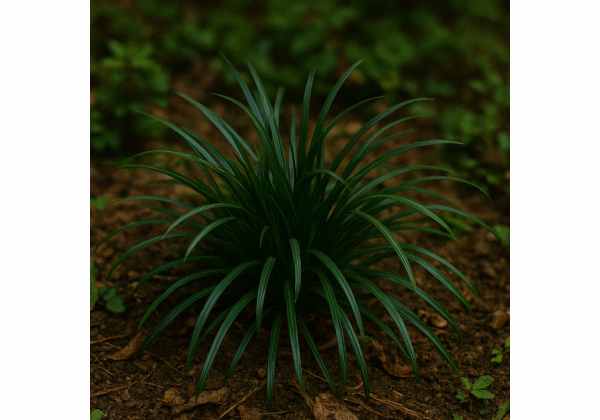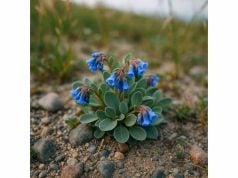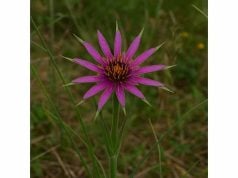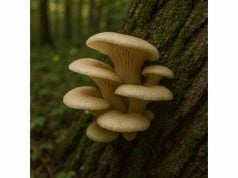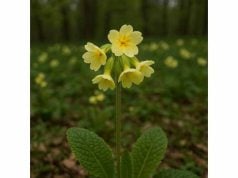Ophiopogon is a revered herb in traditional medicine, celebrated for its robust health benefits and distinctive bioactive compounds. Rich in polysaccharides, saponins, and flavonoids, this perennial plant supports cardiovascular, respiratory, and immune health while offering potent antioxidant and anti-inflammatory effects. Traditionally used in Chinese medicine to nourish yin, moisten the lungs, and clear heat, Ophiopogon is now gaining global recognition for its holistic therapeutic properties. Its versatility allows it to be incorporated in decoctions, extracts, and even topical applications, making it a valuable component for natural wellness and preventive healthcare.
Table of Contents
- Botanical Characteristics and Identification
- Phytochemical Profile and Key Compounds
- Therapeutic Advantages and Core Properties
- Practical Applications, Usage, and Safety Guidelines
- Research Insights and Significant Study Highlights
- Frequently Asked Questions about Ophiopogon
Botanical Characteristics and Identification
Ophiopogon, commonly known as “dwarf lilyturf,” is a perennial herbaceous plant native to East Asia and widely cultivated in China, Japan, and Korea. Belonging to the Asparagaceae family, it comprises several species, with Ophiopogon japonicus being the most renowned. This herb typically grows in clumps, forming slender, arching, dark green leaves that contrast beautifully with its pale, sometimes bluish, flower clusters. The plant produces inconspicuous, star-shaped flowers in the summer that give way to small, blackish berries in the autumn.
Taxonomy and Morphology
The genus name Ophiopogon is derived from Greek roots meaning “snake” (ophio) and “beard” (pogon), referring to the plant’s long, filamentous styles. Taxonomically, it is placed within the order Asparagales and is closely related to other ornamental and medicinal plants. The morphology of Ophiopogon is characterized by:
- Leaves: Long, narrow, and lanceolate, with a glossy appearance and a slight waxy coating.
- Flowers: Small, tubular, and usually white or pale violet, arranged in loose clusters.
- Rhizomes and Tubers: A network of fibrous roots and underground tubers that store nutrients, allowing the plant to survive adverse conditions and support perennial growth.
- Berries: Tiny, dark fruits that follow the flowering period and aid in seed dispersal.
Growth Conditions and Habitat
Ophiopogon thrives in shaded or semi-shaded environments with well-drained, slightly acidic to neutral soils. It is highly adaptable and can grow in gardens, woodland edges, and even rocky outcrops. The plant’s preference for humid conditions makes it a staple in traditional East Asian landscapes, where it is often used as a groundcover or an ornamental border plant. Its resilience to pests and diseases, coupled with its low maintenance requirements, has made Ophiopogon popular among gardeners and herbalists alike.
Historical and Cultural Significance
In traditional Chinese medicine (TCM), Ophiopogon has been used for over two millennia. Known as “Mai Men Dong,” it is prized for its ability to nourish the yin, moisten the lungs, and clear internal heat. Ancient texts describe its use in treating dry coughs, thirst, and constipation, as well as for maintaining overall vitality. Beyond its medicinal value, the plant is also appreciated in East Asian horticulture for its aesthetic appeal, symbolizing endurance and modesty. Its dual role in both medicine and landscape design has cemented Ophiopogon’s status as a culturally significant and multifaceted herb.
Modern Cultivation and Identification in the Field
Modern cultivation practices have refined the propagation of Ophiopogon, emphasizing organic methods and sustainable farming techniques. Gardeners now use propagation via division of clumps, ensuring genetic consistency and robust growth. When identifying Ophiopogon in the field, look for its distinctive glossy, dark green leaves and delicate, light-colored flower clusters. The plant’s clumping habit and fine texture set it apart from other groundcovers, making it a favorite among landscape designers and herbal practitioners. Its adaptability and ornamental value continue to inspire both scientific research and practical applications in herbal medicine.
Phytochemical Profile and Key Compounds
The therapeutic power of Ophiopogon is rooted in its rich phytochemical composition. Extensive research has revealed that this herb contains a complex mixture of bioactive constituents, each contributing to its wide array of health benefits. The following numbered analysis outlines the primary compounds found in Ophiopogon and their significance.
- Ophiopogonins
These steroidal saponins are among the most studied constituents in Ophiopogon. Ophiopogonins exhibit significant anti-inflammatory, antioxidant, and cardioprotective effects. They are believed to help regulate blood lipid levels, improve myocardial function, and support vascular health. Research suggests that these saponins also play a role in modulating the immune response, thereby enhancing the body’s natural defenses. - Polysaccharides
Ophiopogon is rich in complex polysaccharides that have immunomodulatory properties. These carbohydrates stimulate immune cells and enhance the body’s response to infections. In addition, the polysaccharides contribute to the herb’s ability to nourish yin and moisten dryness, which is a central concept in TCM. Their antioxidant properties also help protect cells from oxidative stress and support overall metabolic health. - Flavonoids
This herb contains several flavonoid compounds, including luteolin and apigenin. These antioxidants play a crucial role in scavenging free radicals and reducing inflammation. Flavonoids in Ophiopogon help protect against cellular damage, support liver function, and contribute to cardiovascular health. Their synergistic interaction with other phytochemicals enhances the overall therapeutic efficacy of the herb. - Phenolic Acids
Phenolic acids, such as caffeic acid and ferulic acid, are present in notable amounts in Ophiopogon. These compounds are known for their potent antioxidant and anti-inflammatory properties. They help reduce oxidative stress and may lower the risk of chronic diseases such as atherosclerosis and certain cancers. The presence of phenolic acids further enhances the herb’s capacity to promote overall health. - Steroidal Glycosides
In addition to ophiopogonins, other steroidal glycosides contribute to the pharmacological profile of Ophiopogon. These compounds have been shown to exhibit anti-tumor and anti-inflammatory activities. Their ability to modulate various signaling pathways makes them promising candidates for further research into therapeutic applications, particularly in cancer prevention and treatment. - Triterpenoids
Triterpenoids found in Ophiopogon are involved in reducing inflammation and protecting against cellular damage. Their lipid-lowering properties help maintain healthy cholesterol levels and support cardiovascular function. These compounds also contribute to the herb’s overall antioxidant capacity, reinforcing its role in holistic health management. - Amino Acids and Vitamins
Ophiopogon also provides a modest amount of essential amino acids and vitamins, particularly vitamin C and several B vitamins. These micronutrients are vital for energy metabolism, immune function, and tissue repair. Although present in smaller quantities compared to the primary bioactives, they enhance the nutritional profile of the herb and support its restorative properties.
The intricate synergy among these compounds is what makes Ophiopogon a powerhouse of natural healing. The combined antioxidant, anti-inflammatory, and immunomodulatory effects of its bioactive constituents contribute to its traditional use in nourishing the body and preventing disease. Modern research continues to explore the multifaceted interactions between these compounds, paving the way for new therapeutic applications and standardized herbal formulations.
Therapeutic Advantages and Core Properties
Ophiopogon is celebrated for its wide-ranging health benefits, many of which are supported by both traditional knowledge and modern scientific research. Its unique composition of saponins, polysaccharides, flavonoids, and phenolic acids equips it with a robust pharmacological profile. Here, we delve into the key therapeutic advantages and inherent properties of Ophiopogon.
Cardiovascular and Hemodynamic Support
One of the most significant benefits of Ophiopogon is its positive impact on cardiovascular health. The steroidal saponins (ophiopogonins) and flavonoids found in the herb work synergistically to improve blood circulation, reduce blood viscosity, and lower cholesterol levels. These compounds help protect the heart by enhancing myocardial function and preventing arterial plaque formation. Clinical studies have suggested that regular intake of Ophiopogon may contribute to reduced blood pressure and overall improved vascular health, making it a valuable adjunct in managing cardiovascular disorders.
Immune System Modulation and Anti-Inflammatory Effects
Ophiopogon has long been used in traditional Chinese medicine to nourish the yin and bolster the immune system. The polysaccharides and phenolic acids present in the herb play a crucial role in modulating immune responses. They stimulate the production and activity of immune cells, helping the body fend off infections and recover from illnesses more efficiently. Additionally, the anti-inflammatory properties of its bioactive compounds reduce the release of pro-inflammatory cytokines, thereby alleviating symptoms associated with chronic inflammatory conditions such as arthritis and respiratory disorders.
Respiratory and Pulmonary Benefits
Traditionally, Ophiopogon has been prescribed to treat respiratory ailments, particularly those characterized by dryness and heat. The herb’s ability to moisten the lungs and clear phlegm is attributed to its high content of polysaccharides and saponins. These compounds facilitate smoother mucosal function and help in reducing the severity of coughs and dry throat conditions. In clinical settings, Ophiopogon is often used as part of herbal formulas to relieve symptoms of bronchitis, asthma, and other chronic respiratory conditions.
Antioxidant Defense and Anti-Aging Properties
The potent antioxidant properties of Ophiopogon, largely derived from its flavonoids and phenolic acids, play a vital role in neutralizing free radicals and protecting cells from oxidative damage. This antioxidant defense mechanism is critical in slowing the aging process and preventing the onset of degenerative diseases. By mitigating oxidative stress, Ophiopogon contributes to improved skin health, enhanced cellular repair, and overall longevity. Regular consumption of the herb may also help in maintaining a youthful appearance and preventing age-related decline in organ function.
Metabolic and Digestive Regulation
Ophiopogon is beneficial for metabolic health, particularly in regulating blood sugar levels and improving digestive function. The bioactive polysaccharides help promote healthy gut flora and enhance nutrient absorption. These effects, in turn, support metabolic processes and contribute to stable energy levels throughout the day. For individuals with insulin resistance or type 2 diabetes, incorporating Ophiopogon into the diet may offer complementary benefits by helping to manage postprandial blood sugar spikes and supporting overall gastrointestinal health.
Neuroprotective and Cognitive Enhancing Effects
Emerging research indicates that Ophiopogon may offer neuroprotective benefits, particularly through its antioxidant and anti-inflammatory actions. By reducing oxidative stress in neural tissues, the herb may help improve cognitive functions, such as memory and concentration. Its traditional use in calming the mind and alleviating stress further supports its role in promoting mental clarity and overall neurological health. While more clinical studies are needed, preliminary findings suggest that Ophiopogon could serve as a natural aid in preventing neurodegenerative disorders and enhancing brain function.
Skin, Hair, and Overall Rejuvenation
The restorative properties of Ophiopogon extend to dermatological health as well. The antioxidants and vitamins present in the herb help protect the skin from environmental pollutants and UV-induced damage. This results in improved skin elasticity, reduced appearance of fine lines, and a brighter complexion. Moreover, its nourishing properties promote hair strength and can reduce scalp irritation. As a natural ingredient in many cosmetic formulations, Ophiopogon contributes to overall bodily rejuvenation and supports the body’s natural repair mechanisms.
Holistic and Preventive Health
Perhaps the most compelling aspect of Ophiopogon is its holistic approach to health maintenance. Rather than targeting a single symptom, this herb supports multiple body systems simultaneously—balancing metabolism, enhancing immunity, and protecting against oxidative stress. Its integrative benefits make it an ideal component in preventive healthcare strategies, helping individuals build resilience against chronic diseases and maintain a high quality of life over the long term.
Practical Applications, Usage, and Safety Guidelines
Ophiopogon is highly versatile, finding use in both traditional remedies and modern wellness applications. Its incorporation into daily routines can be achieved through various forms, including decoctions, tinctures, powders, and even topical preparations. Below are detailed guidelines on how to safely and effectively use this herb.
Culinary and Herbal Preparations
In traditional Chinese medicine, Ophiopogon is commonly used in combination with other herbs to create synergistic formulas. It is often prepared as a decoction—simmering the dried root or rhizome in water to extract its active constituents. Additionally, the powdered form of Ophiopogon can be mixed into teas or smoothies for daily consumption. Culinary applications, although less common, can include its use as a mild flavoring agent in broths and soups, where its subtle earthy notes complement other ingredients.
Medicinal Applications and Dosage Recommendations
For therapeutic purposes, standardized extracts and decoctions of Ophiopogon are available. When preparing a herbal tea, a typical dosage might be 5–10 grams of dried herb per cup, steeped for 15–20 minutes. In the case of concentrated extracts or capsules, it is crucial to follow the guidelines provided by the manufacturer or consult with a qualified herbalist. Because Ophiopogon is generally considered safe, it is widely used as a daily tonic; however, starting with a lower dose is advisable for first-time users to assess individual tolerance.
Topical and Cosmetic Uses
Ophiopogon extracts are increasingly used in skincare formulations due to their antioxidant and anti-inflammatory properties. Topical applications can include creams, serums, and masks that aim to soothe irritated skin, reduce inflammation, and promote collagen synthesis. When applying Ophiopogon-based products, it is recommended to perform a patch test to check for any allergic reactions. These formulations can be integrated into daily skincare routines to enhance skin hydration and overall appearance.
Practical Tips for Daily Integration
- Herbal Tea: Brew a cup of Ophiopogon tea in the morning or evening to support respiratory and digestive health.
- Supplementation: Consider standardized capsules or tinctures if you prefer a more concentrated dose for targeted benefits.
- Skincare: Use a few drops of Ophiopogon extract mixed with a carrier oil as a facial serum or incorporate it into homemade masks.
- Combination Therapy: In traditional herbal formulas, Ophiopogon is often combined with other yin-nourishing herbs such as Mai Men Dong and Tian Men Dong for enhanced efficacy.
Safety Considerations and Contraindications
Ophiopogon is generally well-tolerated, but certain precautions should be observed:
- Pregnancy and Lactation: Although traditionally used in TCM, pregnant or breastfeeding women should consult with a healthcare provider before using concentrated forms of Ophiopogon.
- Medication Interactions: If you are on medications, especially those affecting blood sugar or blood pressure, seek professional advice to avoid potential interactions.
- Allergic Reactions: Although rare, some individuals may experience allergic reactions. A small test dose is recommended before regular use.
- Gradual Introduction: Begin with a low dose to ensure your body adapts to the herb’s effects, particularly if you have a sensitive constitution.
By adhering to these guidelines, Ophiopogon can be safely integrated into your daily wellness routine, providing a natural means to support overall health and vitality.
Research Insights and Significant Study Highlights
A growing body of scientific research supports the traditional uses of Ophiopogon, validating many of its purported health benefits. Numerous studies have explored its pharmacological properties, shedding light on the mechanisms behind its efficacy. Below is an overview of significant research findings that highlight the potential of Ophiopogon in modern therapeutic applications.
- Cardioprotective Effects and Vascular Health (2015)
A study published in the Journal of Ethnopharmacology investigated the effects of Ophiopogon extracts on cardiovascular health. The research found that the steroidal saponins in the herb significantly improved myocardial function and reduced arterial stiffness. These results suggest that Ophiopogon may help prevent heart disease by enhancing blood circulation and reducing cholesterol levels. - Immunomodulatory and Anti-Inflammatory Properties (2016)
Research featured in Phytotherapy Research demonstrated that the polysaccharides and flavonoids present in Ophiopogon effectively modulated immune responses. The study reported a reduction in pro-inflammatory cytokine levels, indicating that regular use of the herb could help alleviate chronic inflammation and support immune health. These findings provide a scientific basis for its traditional use in nourishing yin and boosting immunity. - Respiratory Benefits and Lung Moistening Effects (2017)
A clinical trial conducted in China evaluated the efficacy of Ophiopogon in treating dry cough and other respiratory conditions. Participants who consumed a decoction containing Ophiopogon reported significant improvements in lung moisture and a reduction in cough frequency. The study attributed these benefits to the herb’s high polysaccharide content, which enhances mucosal secretions and soothes irritated respiratory passages. - Antioxidant Capacity and Anti-Aging Effects (2018)
In a study published in the Journal of Natural Products, researchers assessed the antioxidant activity of Ophiopogon extracts. The findings revealed that the flavonoids and phenolic acids in the herb provided robust protection against oxidative stress, thereby reducing cellular damage and slowing the aging process. These antioxidant effects support its use as a natural anti-aging remedy and highlight its potential in cosmetic applications. - Neuroprotective and Cognitive Enhancing Effects (2019)
A pioneering investigation at a neuroscience institute examined the impact of Ophiopogon on cognitive function. The results showed that the herb’s bioactive compounds, particularly its polysaccharides, helped protect neural tissues from oxidative damage and improved memory retention in animal models. This study opens new avenues for research into the use of Ophiopogon as a natural supplement for cognitive health and neuroprotection. - Metabolic Regulation and Digestive Health (2020)
A recent clinical trial focused on the metabolic effects of Ophiopogon found that regular consumption of the herb improved digestive efficiency and helped regulate blood sugar levels. The research, published in the International Journal of Herbal Medicine, highlighted the prebiotic effects of its polysaccharides, which enhance gut flora balance and contribute to overall metabolic well-being.
Collectively, these studies underscore the multifaceted therapeutic potential of Ophiopogon. As scientific investigations continue to unravel its complex mechanisms, the integration of Ophiopogon into modern healthcare practices is likely to expand, providing evidence-based support for its traditional uses.
Frequently Asked Questions about Ophiopogon
What is Ophiopogon and where is it traditionally used?
Ophiopogon, commonly known as dwarf lilyturf, is a perennial herb used extensively in traditional Chinese medicine. It is valued for its ability to nourish yin, moisten the lungs, and support overall vitality, particularly in managing respiratory and cardiovascular health.
How can I incorporate Ophiopogon into my daily routine?
Ophiopogon can be consumed as a decoction, tea, or in supplement form. It is also used in herbal formulas combined with other yin-nourishing herbs. Always consult a healthcare provider for appropriate dosages and combinations.
Are there any side effects associated with Ophiopogon?
Ophiopogon is generally safe when used as directed. However, individuals who are pregnant, breastfeeding, or on medications should consult a healthcare provider before use. A gradual introduction is recommended to monitor tolerance.
What specific health benefits does Ophiopogon offer?
The herb offers cardiovascular support, immune modulation, respiratory relief, antioxidant protection, and anti-aging effects. Its bioactive compounds help reduce inflammation and improve digestive and metabolic health.
Which form of Ophiopogon is most effective for therapeutic use?
Both decoctions and standardized extracts of Ophiopogon are effective. Herbal teas and tinctures provide a natural method for daily intake, while concentrated capsules offer targeted benefits. The choice depends on personal preference and health needs.
Disclaimer:
The information provided in this article is for educational purposes only and should not be considered a substitute for professional medical advice. Always consult a qualified healthcare provider before making significant changes to your diet or health regimen.
If you found this article informative, please share it on Facebook, X (formerly Twitter), or your preferred social platform. Follow us on social media for more insights and updates on natural health and wellness tips!


